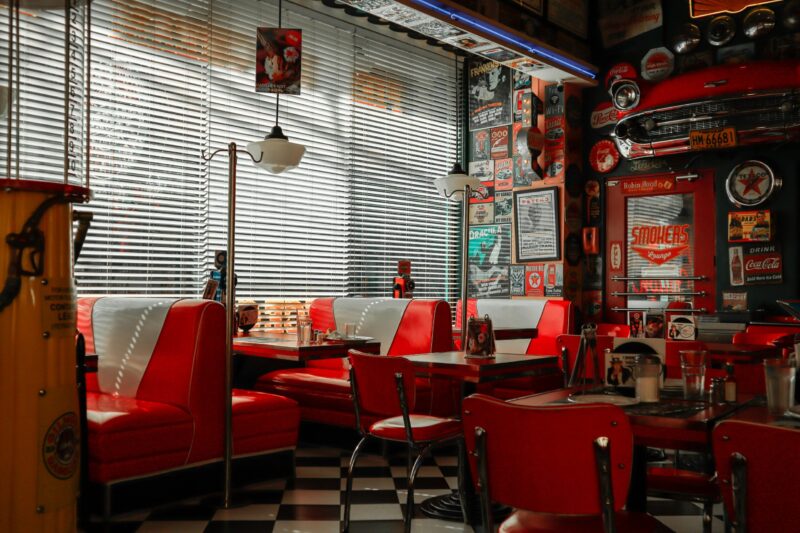08 Apr, 2024
Breakfast Business Tips
Brunch at New York City’s Balthazar is an experience: light pouring into the room from Spring Street, classical music in the background, and a lively but tranquil Parisian bistro setting. It’s impossibly chic.
At Founding Farmers, the farmer-owned concept with locations in Washington D.C., Montgomery County, MD, and Tysons, VA, brunch is a family-friendly, all-American event focused on quality ingredients, sustainability, and community. The menu is full of familiar favorites and comfort foods.
Although the restaurants are different, they share one important characteristic: an incredibly popular, high-volume brunch that’s become a staple of their brands. Erin Wendt, General Manager at Balthazar, and Meaghan O’Shea, Marketing Director at Founding Farmers, share their top tips for creating a brunch experience guests will come back for again and again.
1. Make it comfortable
Brunch attracts many different types of guests, especially in a city like Washington D.C., O’Shea says. From people who just finished a marathon to the post-church crowd, from young professionals to grandparents—a great brunch can accommodate everyone, no matter where they came from or what they’re wearing.
And same goes with the food. “We have a large menu and a multitude of options,” she says. “We want to make it that place with a hip, fresh feel, that’s comfortable and not stuffy. We’re going to have something for everyone in your party; that takes out the work on the guests’ part when they’re planning for a group.”
2. Be prepared
Asked for tips on increasing efficiency, Wendt says: “A bit like Carnegie Hall: preparation, preparation, preparation.”
The key, she adds, is making sure you have all the ingredients you need for each dish, as well as the correct anticipated amount. There’s mental preparation needed, too: when shifts are 10 hours long, your staff needs to be physically and mentally prepared to give every customer the same amazing experience.
“The organization of the shift, the paperwork with the side work and floor maps—when you step back it all looks like we are planning an invasion,” says Wendt. “A culinary invasion.”
O’Shea agrees. The back-of-house team at Founding Farmers preps as much as they possibly can the night before brunch service to make the shift that much easier. On Friday nights they bake bread, make jam, and portion out enough for the first couple of turns so that’s one less thing they have to do in the morning.
The service team assembles extra rollups for the tables and bring extra coffee mugs out of storage, along with spoons and creamers. They do weekly inventory on those items to make sure they’re not caught off-guard during service. “There are little things you can control to make it less stressful.”

3. Get smart about time management
While there are plenty of things you can do ahead for brunch, there are just as many that you can’t: filling coffee, rushing plates and sides back and forth to the kitchen, and marking tables with the right silverware. Those steps take time.
“Servers have to really be on their game to get tables turned quickly,” O’Shea says. “We try and have our A-team, our aces in places, on the brunch shift—it’s usually our more senior team because you have to be able to really work smart.”
4. Change up your staffing
For brunch at Balthazar Wendt adds about 25% more staff to the front of house (if they normally have nine waiters for lunch, they’ll have 12 for brunch). Because the labor is more intensive, Founding Fathers may do more three-table stations instead of four-table stations because servers are able to turn tables and give better service. O’Shea says they also have more server assistants on the floor to help with water and coffee refills and run the food.
Another way O’Shea says her team has evolved over the years is through its leadership and training. “People have grown up and developed with us, or we’ve been able to attract great talent who support what we’re doing, and now we have a stable, core management team,” she says. “Our ability to execute more consistently and train has gotten better as we’ve gotten older in our restaurant years—we’re learning what works and what doesn’t work.”
5. Find the right flow
At Balthazar, the team is constantly optimizing their brunch service by learning how many reservations to take, what reservation system to use, and what times ensure efficiency. Focus on the customer first and foremost, they advise, and make sure the maitre d’ doesn’t rush the room.
“People may want to be eating brunch for only 45 minutes or as long as two hours,” says Wendt. “So we book accordingly, actively trying to let people drive their own meal here. Experience and mistakes have given us the vast knowledge we have now.”
6. Set prices fairly
O’Shea is adamant that brunch should be priced fairly to be appropriate and approachable. “Too expensive, and you will cut off your business at the ankles,” she says.
The sweet spot is where quality meets affordability. Since Founding Farmers bakes bread and makes jam in house, they offer extremely high-quality food, but they can still get away with charging $9 for two eggs, bacon, and toast. Yes, there’s a small extra cost up front, but the quality is also a differentiator for the restaurant and a value added for guests.

7. Don’t underestimate routine
Guests tend to be less adventurous at breakfast and brunch than they are at dinner. At Founding Farmers’ D.C. and Potomac locations, the menus are nearly identical, besides a couple of nods to local cuisine (a Frab Benedict in Maryland, for example). That’s because people know and love their breakfast menu, says O’Shea.
“It’s that routine factor—if you have eggs every morning, you want eggs, if you have pancakes on Sunday, you want pancakes. You get attached to routine more at breakfast and brunch than at dinner. We’re fortunate that we don’t have to recreate the menu a lot.”
On a similar note, brunch is probably not the best time to experiment with fleeting trends or ideas for restaurant events. Instead, O’Shea advises to stick with what you know, to understand what your guests like through product mix reports and talking to them, and zero in and grow those areas.

